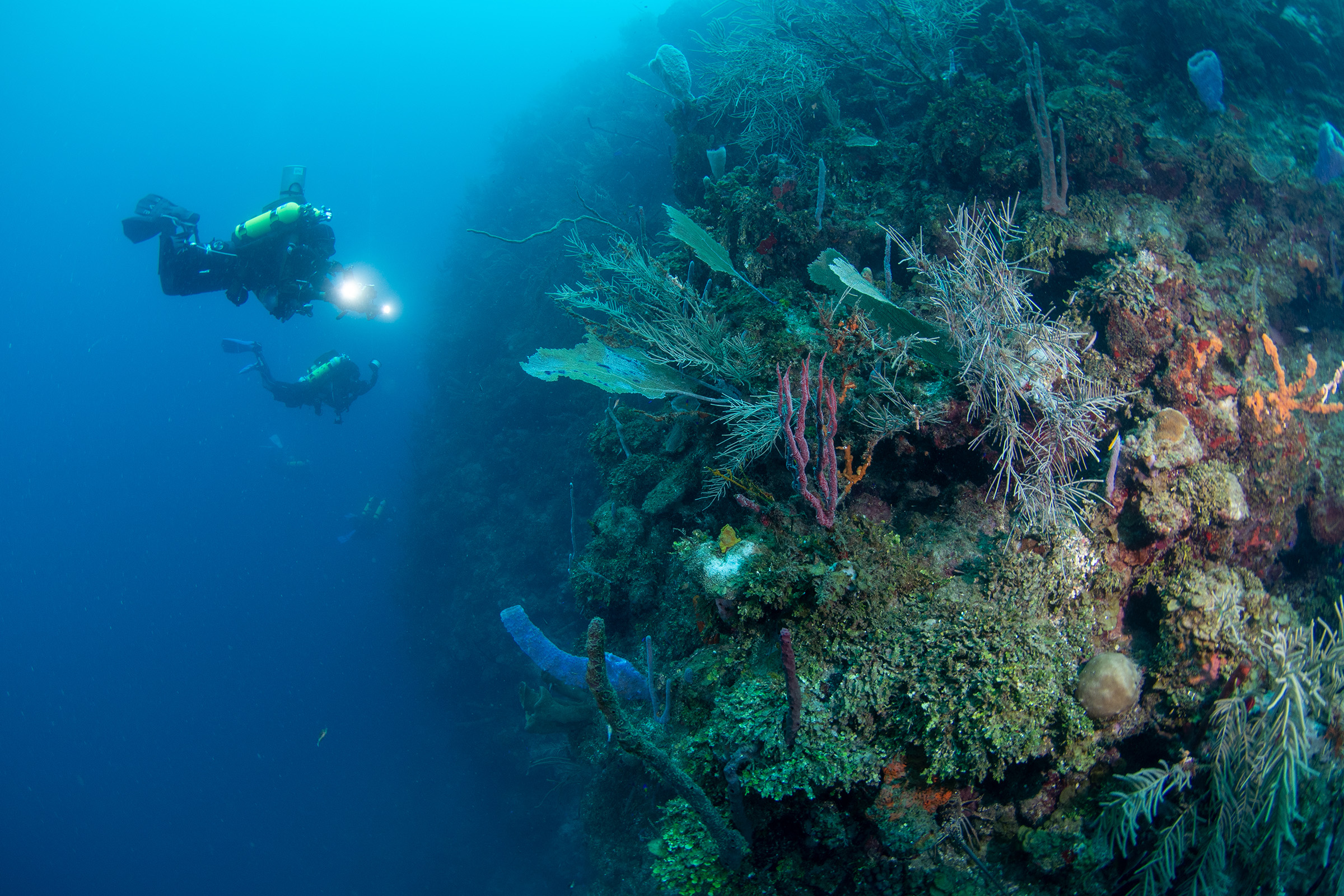Thailand, known for its breathtaking tourist attractions, vibrant cities, delectable Thai food, and picturesque beaches, is also home to remarkable coral reefs. In this article, you’ll explore the captivating biodiversity of Thailand’s resilient coral reefs through the eyes of a marine biologist. Delve into the depths of these underwater ecosystems as we uncover the hidden gems and fascinating species that call them home. Get ready for a journey beneath the surface as we discover the wonders of Thailand’s coral reefs.
The Importance of Thailand’s Coral Reefs
Thailand’s coral reefs are vital ecosystems that provide numerous ecosystem services and support a diverse range of marine species. These coral reefs are not only beautiful tourist attractions but also play a crucial role in maintaining the health of our oceans. Understanding the significance of these coral reefs and the threats they face is essential for their preservation and the well-being of marine life.
Ecosystem services provided by coral reefs
Coral reefs offer a variety of ecosystem services that are critical for both the marine environment and human populations. Firstly, they act as natural barriers, protecting coastlines from erosion and reducing the impact of storms and waves. Additionally, coral reefs play a vital role in carbon cycling by sequestering large amounts of carbon dioxide and helping to mitigate climate change.
Moreover, these vibrant ecosystems support a wide array of fish and invertebrate species, contributing to the diversity and abundance of marine life. Coral reefs are also significant sources of fishery resources, providing food and livelihoods for millions of people around the world. Finally, they attract tourists from all over the globe, generating economic benefits and supporting local communities.
Threats to coral reefs
Despite their ecological and economic importance, Thailand’s coral reefs face numerous threats that put their survival at risk. One of the primary threats is coral bleaching, caused by rising sea temperatures and climate change. When corals are subjected to stressful conditions, they expel the algae living within their tissues, leading to their bleached appearance and potential death.
Pollution is another major threat, as nutrient runoff from land-based activities, such as agriculture and wastewater discharge, can cause nutrient imbalances and harmful algal blooms. Overfishing and destructive fishing practices like dynamite fishing and coral collecting also pose significant threats to the health and resilience of coral reefs. Finally, coastal development and tourism-related activities can lead to physical damage and habitat degradation.
Benefits of studying Thailand’s coral reefs
Studying Thailand’s coral reefs provides valuable insights into the ecosystem dynamics, biodiversity, and potential conservation strategies. By conducting research on these coral reefs, scientists can better understand the resilience mechanisms that allow certain species or communities to cope with disturbances, such as coral bleaching.
Furthermore, studying coral reefs in Thailand allows scientists to identify key locations and factors that influence coral reef distribution. This information can aid in the design and implementation of effective conservation strategies, including the establishment of marine protected areas. Additionally, studying the major species of coral and associated fish and invertebrates helps us gain a better understanding of their ecological roles and interdependencies.
Geographical Distribution of Coral Reefs in Thailand
Thailand is blessed with an extensive coastline and diverse marine habitats, making it suitable for the growth and development of coral reefs. Key locations where these coral reefs can be found include the Andaman Sea and the Gulf of Thailand. These regions are home to some of the most biodiverse and resilient coral communities in the country.
Factors influencing coral reef distribution
Several factors determine the distribution of coral reefs in Thailand. Firstly, water temperature plays a crucial role, as coral reefs thrive in warm tropical waters. The availability of suitable substrate for coral growth, such as hard substrates like rocks and reefs, is also vital. Water quality, nutrient availability, and light penetration are other factors that affect coral reef distribution.
In addition to these abiotic factors, the geographical location and depth can influence the diversity of coral reefs. Coral species richness and abundance tend to decrease in areas with higher wave energy, while deeper areas with greater access to nutrients from offshore currents can support a different composition of coral species. Moreover, local factors like sedimentation, pollution, and fishing pressure can also impact the distribution and health of coral reefs.
Comparison of coral reef biodiversity across regions
Thailand’s coral reefs exhibit impressive levels of biodiversity, with various coral species coexisting and providing habitat for diverse fish and invertebrate communities. Although the coral reefs of the Andaman Sea and the Gulf of Thailand share some similarities, there are notable differences in their biodiversity.
The coral reefs in the Andaman Sea, particularly around popular tourist destinations like Phuket and the Similan Islands, are renowned for their vibrant colors and the presence of numerous coral species. These reefs are known for their high diversity of both hard and soft corals, creating a visually stunning underwater landscape.
In contrast, the coral reefs in the Gulf of Thailand, including those near the popular tourist island of Koh Samui, are characterized by a lower diversity of coral species. However, they still offer unique and important habitats for fish and invertebrates, including economically valuable species like groupers and snappers.
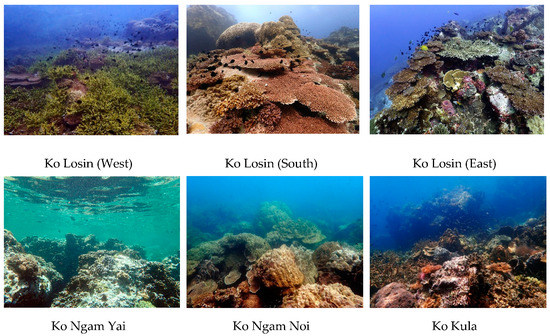
Major Species of Coral in Thailand
Thailand’s coral reefs are home to a wide range of coral species, each with its own adaptations and ecological significance. Understanding the diversity and distribution of these coral species is crucial for assessing the health and resilience of coral reef ecosystems.
Overview of coral species diversity
Thailand’s coral reefs host over 300 species of hard corals, belonging to various genera. These hard corals can be classified into branching, plate-like, or massive forms, each with its unique growth patterns and structures. Additionally, soft corals, which are more flexible and lack hard skeletons, are also prevalent in Thai waters, contributing to the overall coral diversity.
Coral species diversity is highest in areas with favorable conditions, such as clear water, optimal temperatures, and low human disturbance. However, some species are more adaptable and can thrive under less ideal conditions, showing resilience to environmental changes.
Dominant and endangered coral species
Among the dominant coral species found in Thailand’s coral reefs is the staghorn coral (Acropora spp.), which forms dense thickets with its branching structures. Another important coral species is the brain coral (Favia spp.), known for its distinct dome-shaped colonies.
Unfortunately, several coral species in Thailand are classified as endangered or at risk of extinction. For example, the magnificent elephant ear coral (Goniopora sp.) is highly prized in the aquarium trade and often illegally harvested, leading to population declines. Protecting and conserving these endangered coral species is vital for the overall health and biodiversity of Thailand’s coral reefs.
Factors influencing coral species abundance
Various factors influence the abundance and distribution of coral species in Thailand’s coral reefs. Temperature is a significant factor, as some coral species have narrower thermal tolerances and can only survive in a specific range. Additionally, light availability, water quality, and nutrient availability all play important roles in determining coral species abundance.
Human activities, such as overfishing, pollution, and physical damage, can also impact coral species abundance. Some corals, like the mushroom coral (Fungia spp.), are more tolerant of disturbance and can recover relatively quickly, while others, such as the delicate table coral (Acropora cytherea), are more sensitive and vulnerable to changes in their environment.
Fish and Invertebrate Diversity on Thailand’s Coral Reefs
Fish and invertebrates play crucial roles in the functioning of coral reef ecosystems and contribute to the overall biodiversity and resilience of these habitats. Understanding the diversity and ecological interactions of these marine organisms is essential for effective coral reef management and conservation.
Role of fish and invertebrates in reef ecosystems
Fish and invertebrates have important ecological roles within coral reef ecosystems. They help control algal growth, facilitate nutrient cycling, and participate in complex food webs. For example, herbivorous fish like parrotfish and surgeonfish consume algae, preventing it from overgrowing and smothering coral colonies.
Predatory fish, such as snappers and groupers, regulate the population of smaller fish and invertebrates, maintaining balance within the ecosystem. Invertebrates like sea urchins and starfish also contribute to ecological processes by controlling algal growth and keeping coral surfaces clean.
Importance of coral reefs as nurseries for marine species
Thailand’s coral reefs serve as important nurseries for many marine species. Juvenile fish depend on the intricate reef structure for protection from predators and access to food resources. The complex branching corals provide sheltered habitats where young fish can grow and develop before venturing into the open ocean as adults.
Some fish species, like the colorful clownfish, famously known as Nemo, rely on specific types of corals, such as anemones, for both protection and food. The loss or degradation of coral reefs can disrupt the nursery habitats and impact the survival of many marine species, leading to population declines and potential ecosystem imbalances.
Thailand’s unique fish and invertebrate species
Thailand’s coral reefs harbor a stunning variety of fish and invertebrate species, many of which are endemic to the region. The Andaman Sea, with its diverse coral reef ecosystems, is home to iconic species like the lionfish, triggerfish, and angelfish. The Gulf of Thailand also boasts unique species, including the colorful clownfish mentioned earlier.
In addition to the charismatic fish species, Thailand’s coral reefs are also inhabited by a multitude of invertebrates, including various species of shrimps, crabs, and sea stars. These invertebrates contribute to the complex and diverse web of life within coral reef ecosystems and are essential for maintaining the overall health and functioning of these habitats.
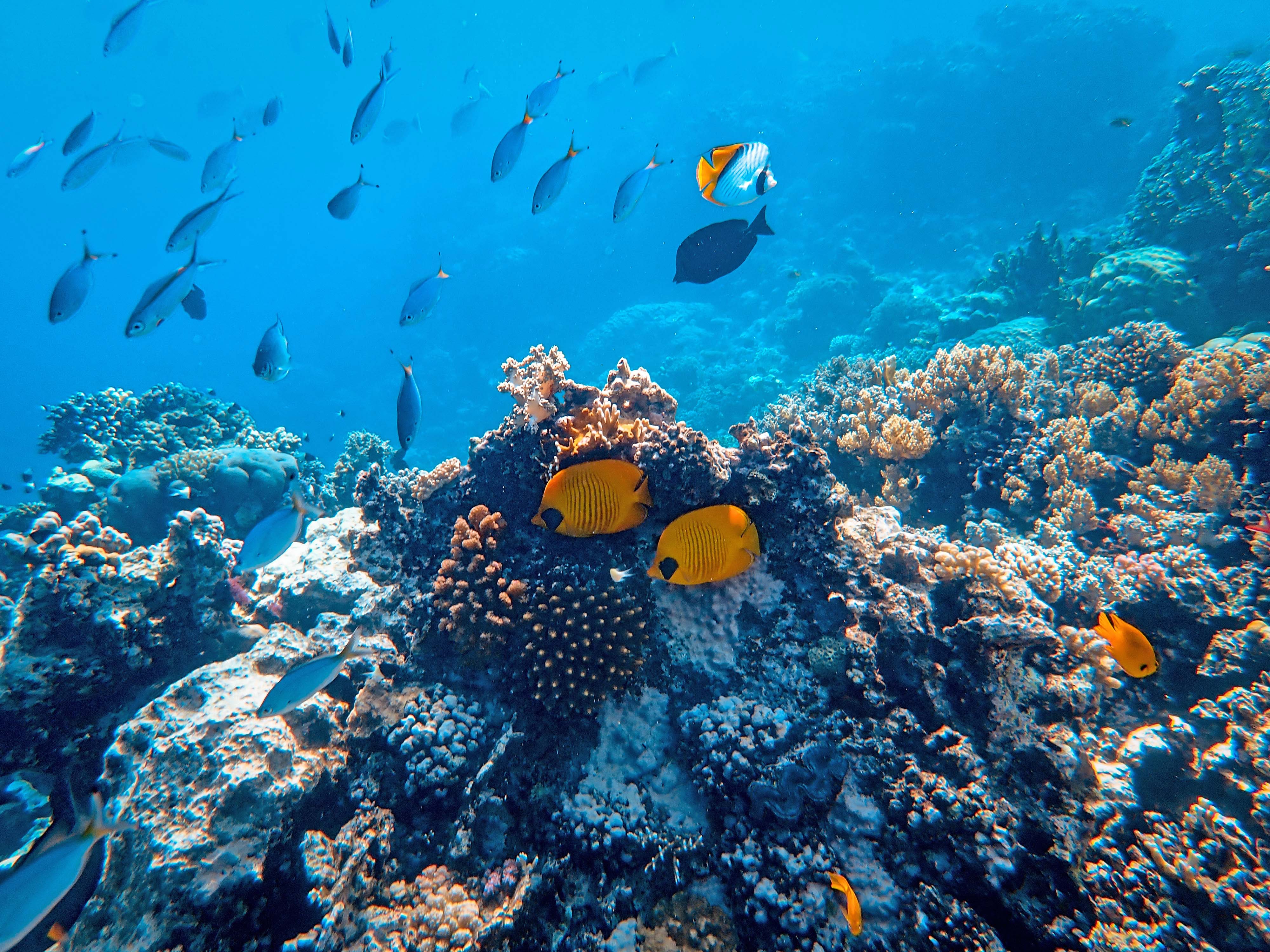
Other Marine Fauna Associated with Thailand’s Coral Reefs
Thailand’s coral reefs provide habitats and support a diverse range of marine species beyond just fish and invertebrates. The waters surrounding these coral reefs are teeming with life, including migratory species and those in need of protection due to their vulnerable status.
Overview of marine species diversity
In addition to fish and invertebrates, Thailand’s coral reefs host a wealth of marine diversity, including marine mammals, sea turtles, and various species of crustaceans and mollusks. These marine species are intricately linked to the health and functioning of coral reef ecosystems.
Some of the iconic marine mammals found near Thailand’s coral reefs include dolphins and whales. These majestic creatures are frequently seen in the Gulf of Thailand and the Andaman Sea. Endangered species like the dugong, also known as the sea cow, depend on seagrass meadows adjacent to coral reefs as a source of food and refuge.
Migratory species found near coral reefs
Thailand’s coral reefs serve as important habitats and stopover sites for various migratory species. Many species of birds, such as terns and gulls, rely on coral reefs for rest and foraging during their long journeys. Migratory fish species, including some commercially important ones like tunas and groupers, also utilize coral reefs as they move between breeding and feeding grounds.
Migratory marine species face numerous challenges on their journeys, including threats from overfishing and habitat loss. Protecting the coral reefs and associated habitats is crucial for supporting the survival and conservation of these migratory species.
Threatened and protected species in the vicinity of coral reefs
Thailand’s coral reefs are home to several threatened and protected species, and their conservation is of paramount importance for maintaining their populations and protecting overall biodiversity. Sea turtles, such as the green turtle and hawksbill turtle, rely on coral reefs for food and nesting sites. These species face threats from habitat degradation, entanglement in fishing gear, and poaching.
In addition to turtles, various species of sharks and rays can be found near coral reefs in Thailand’s waters. Unfortunately, these iconic marine creatures are vulnerable to overfishing and habitat degradation. Efforts to protect and conserve these threatened species, as well as their habitats, are crucial for ensuring their survival and the long-term health of coral reef ecosystems.
Impact of Climate Change on Thailand’s Coral Reefs
Climate change poses significant threats to Thailand’s coral reefs, with rising sea temperatures and ocean acidification being key drivers of their degradation. Understanding these impacts and implementing mitigation measures and conservation efforts are essential for the preservation of these vital marine ecosystems.
Rising sea temperatures and coral bleaching events
One of the most pressing threats to Thailand’s coral reefs is rising sea temperatures due to climate change. When seawater temperatures exceed certain thresholds, coral colonies become stressed and expel the symbiotic algae they rely on for nutrition, causing coral bleaching. If the stressful conditions persist, corals may die, leading to the loss of reef structure and habitat.
Coral bleaching events have become more frequent and severe in recent decades, causing significant damage to coral reefs worldwide, including those in Thailand. The increasing occurrence of these events threatens the biodiversity and long-term survival of coral reef ecosystems. Mitigating the impacts of rising sea temperatures is crucial for the future of Thailand’s coral reefs.
Ocean acidification and its effects on coral reefs
Another consequence of climate change is ocean acidification, which occurs when seawater absorbs excess carbon dioxide from the atmosphere. Increased carbon dioxide levels in the water decrease pH levels, making it more acidic. This acidification can inhibit the growth and development of coral skeletons, denigrating the overall health and stability of coral reefs.
Ocean acidification also affects other marine organisms, such as shell-forming organisms like mollusks and some planktonic species that play important roles in the marine food chain. These cascading effects have the potential to further destabilize coral reef ecosystems and reduce their resilience to other threats.
Mitigation measures and conservation efforts
Efforts to mitigate the impacts of climate change on Thailand’s coral reefs include both global and local measures. Globally, reducing greenhouse gas emissions is crucial for limiting further warming of the oceans and the associated impacts on coral reefs. The adoption of renewable energy sources, promoting energy efficiency, and reforestation are some of the strategies employed to reduce carbon dioxide emissions.
On a local scale, implementing conservation measures like establishing marine protected areas and implementing sustainable fishing practices can aid in reducing local stressors and enhancing the resilience of coral reefs. Furthermore, promoting public awareness and engagement in coral reef conservation is vital for fostering a culture of environmental responsibility and inspiring individuals to make a difference.
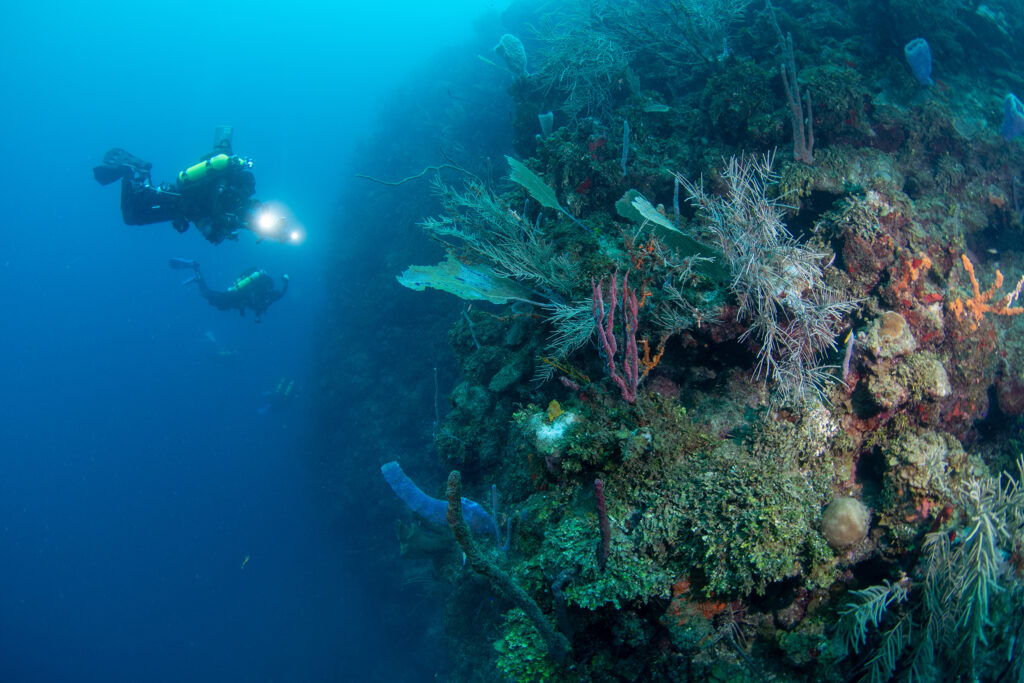
Thailand’s Coral Reefs and Sustainable Tourism
Thailand’s coral reefs are not only significant natural wonders but also have a considerable impact on the tourism industry. Understanding the role of coral reefs in attracting tourists and promoting responsible tourism practices is essential for ensuring their long-term sustainability.
Role of coral reefs in attracting tourists
Thailand’s coral reefs are renowned worldwide for their natural beauty and offer unique opportunities for snorkeling, diving, and underwater photography. Tourists are attracted to these vibrant and diverse ecosystems, seeking encounters with colorful fish, magnificent corals, and other marine creatures. The accessibility of these reefs, coupled with Thailand’s renowned hospitality and tourist infrastructure, makes them sought-after destinations for travelers from around the world.
Responsible tourism practices to protect coral reefs
To ensure the long-term sustainability of coral reefs in Thailand, it is essential for tourists and operators to adopt responsible tourism practices. Snorkelers and divers should receive proper education and guidance on responsible behavior, such as not touching or stepping on corals, not feeding fish, and avoiding excessive sunscreen use to minimize pollution.
Tour operators and dive centers can play a proactive role in promoting responsible tourism practices. This can be achieved through training staff in environmentally friendly techniques, adhering to codes of conduct, and incorporating conservation messages into their activities. Implementing sustainable tourism certifications and regulations can also help in the protection of coral reef ecosystems.
Community involvement in coral reef conservation
Engaging local communities in coral reef conservation efforts is crucial for the success and long-term sustainability of such initiatives. Empowering coastal communities through education, alternative livelihood options, and involvement in decision-making processes fosters a sense of ownership and responsibility for their natural resources.
Community-based initiatives, such as the establishment of community-managed marine protected areas and sustainable fishing practices, enable local communities to actively participate in coral reef conservation while benefitting from the resources these ecosystems provide. By including the incentives and perspectives of local communities, long-term solutions that balance conservation and socio-economic needs can be achieved.
Conservation Initiatives and Marine Protected Areas
Thailand is making significant efforts to protect its coral reefs through various conservation initiatives and the establishment of marine protected areas. These initiatives aim to minimize and mitigate the threats faced by coral reefs, offering hope for their preservation and future sustainability.
Governmental efforts to protect coral reefs
The Thai government recognizes the importance of coral reef conservation and has implemented several measures to protect these fragile ecosystems. The Department of Marine and Coastal Resources, along with other relevant agencies, is responsible for managing and conserving marine resources, including coral reefs.
The government has enacted legislation and regulations to control destructive fishing practices and regulate coastal development. Additionally, research and monitoring efforts, public awareness campaigns, and collaboration with local communities and non-governmental organizations (NGOs) are all part of the government’s comprehensive approach to coral reef conservation.
Establishment of marine protected areas in Thailand
Marine protected areas (MPAs) are vital tools for managing and conserving coral reefs. Thailand has designated numerous MPAs across its coastline to protect the country’s marine biodiversity, including coral reef ecosystems. These protected areas restrict or regulate certain activities, such as fishing and tourism, to minimize disturbance and allow for the recovery and growth of coral reefs.
For example, the Surin Islands National Park, located in the Andaman Sea, encompasses both pristine coral reefs and vital nesting beaches for sea turtles. The Koh Phi Phi Marine National Park, situated near the popular tourist destination of Phuket, also safeguards important coral reef ecosystems while providing recreational opportunities for visitors.
Success stories and ongoing conservation projects
Thailand’s coral reef conservation efforts have yielded notable successes, demonstrating the potential for recovery and preservation. One such success story is the rehabilitation of damaged coral reefs in the vicinity of the Phi Phi Islands, following restrictions on tourism activities and the implementation of restoration programs.
Ongoing conservation projects in Thailand actively employ innovative approaches to protect and restore coral reefs. For instance, coral gardening initiatives involve the cultivation and transplantation of coral fragments onto degraded reefs, promoting their recovery and enhancing biodiversity. These projects are often carried out in collaboration with local communities and grassroots organizations, fostering a sense of stewardship and empowerment.
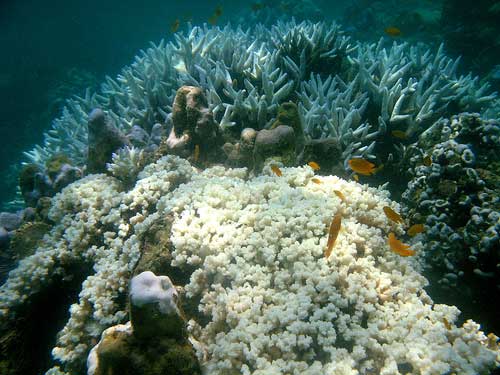
Challenges and Solutions for Preserving Coral Reef Biodiversity
Preserving the biodiversity of Thailand’s coral reefs faces significant challenges from various human activities. Overfishing, destructive fishing practices, pollution, and inadequate education on sustainable reef management all contribute to the degradation of these essential ecosystems. However, through education, awareness programs, and the implementation of sustainable practices, solutions can be found to mitigate these threats.
Overfishing and destructive fishing practices
Overfishing and destructive fishing practices, such as bottom trawling and the use of dynamite or cyanide, pose serious threats to the health and biodiversity of coral reefs. These practices not only deplete fish populations but also cause physical damage to the delicate coral structures.
Solutions to overfishing and destructive practices include the enforcement of fishing regulations, the establishment of no-take zones within MPAs, and the promotion of sustainable fishing techniques. Empowering local fishing communities through alternative livelihood options, such as sustainable aquaculture or ecotourism, can also reduce the pressure on fish populations and associated reefs.
Pollution and nutrient run-off
Pollution, particularly from land-based activities, contributes to the degradation of coral reef ecosystems. Excessive nutrient run-off from agricultural practices, wastewater discharge, and sedimentation can lead to nutrient imbalances, harmful algal blooms, and reduced water quality.
To mitigate the impacts of pollution, efforts should focus on promoting sustainable land use practices, such as proper waste management, responsible agriculture, and the establishment of buffer zones along coastlines. Effective wastewater treatment systems, combined with public awareness campaigns about the importance of clean water, are vital for reducing pollution and protecting coral reef ecosystems.
Education and awareness programs for sustainable reef management
Education and awareness programs are crucial for promoting responsible and sustainable reef management. Through targeted campaigns, local communities, tourists, and businesses can be educated about the importance of coral reefs, the threats they face, and the actions they can take to protect them.
Schools, dive centers, and tourist operators can actively engage in educational initiatives, incorporating environmental education into their programs and activities. Providing opportunities for hands-on experiences, such as coral reef monitoring and restoration projects, can inspire individuals to become stewards of the marine environment.
Future Outlook for Thailand’s Coral Reefs
The future of Thailand’s coral reefs hangs in the balance, with the impacts of climate change and other human-driven threats looming large. However, with adaptive management strategies, international collaboration, and partnerships between government, communities, and conservation organizations, there is hope for the long-term preservation and resilience of these vital ecosystems.
Predicted impacts of climate change on coral reefs
Climate change is expected to continue taking a toll on Thailand’s coral reefs. Rising sea temperatures, ocean acidification, and more frequent extreme weather events pose significant challenges to the health and survival of these ecosystems.
Predictions indicate that by the end of the century, the majority of coral reefs, including those in Thailand, may experience irreversible decline if greenhouse gas emissions remain unchecked. These impacts will not only affect coral species but also have cascading effects on associated marine life and the livelihoods of communities dependent on coral reefs.
Adaptive management strategies for reef preservation
Adaptive management strategies are essential for the preservation of Thailand’s coral reefs in the face of uncertainty and changing conditions. These strategies involve responsive decision-making based on new scientific knowledge and local observations. By regularly monitoring and assessing the health of coral reefs, managers can adapt management actions to address emerging threats and maintain the resilience of these ecosystems.
Incorporating social and ecological resilience into management plans is key. This involves integrating local knowledge and practices, fostering community involvement, and incorporating innovative solutions like coral gardening, reef restoration, and sustainable fishing practices. Collaboration with scientists, conservation organizations, and international partners is crucial for knowledge exchange, capacity building, and the sharing of best practices.
Partnerships and international collaborations
Thailand’s coral reefs are part of a global network of interconnected ecosystems. Collaborating with international organizations, researchers, and governments is vital for sharing knowledge, experiences, and resources necessary for effective coral reef conservation.
Partnerships can involve capacity building programs, joint research ventures, and initiatives that promote sustainable development and alternative livelihood options for local communities. Regional collaborations, such as those facilitated by organizations like the Coral Triangle Initiative, can help implement coordinated strategies and policies to protect vital coral reef habitats.
In conclusion, Thailand’s coral reefs are more than just stunning attractions; they are essential ecosystems that provide invaluable services, support diverse marine life, and contribute to the well-being of local communities. Understanding the distribution, diversity, and threats facing these coral reefs is crucial for effective conservation. By employing sustainable management practices, educating the public, and collaborating with local communities and international partners, there is hope for the continued preservation and resilience of Thailand’s coral reefs.

